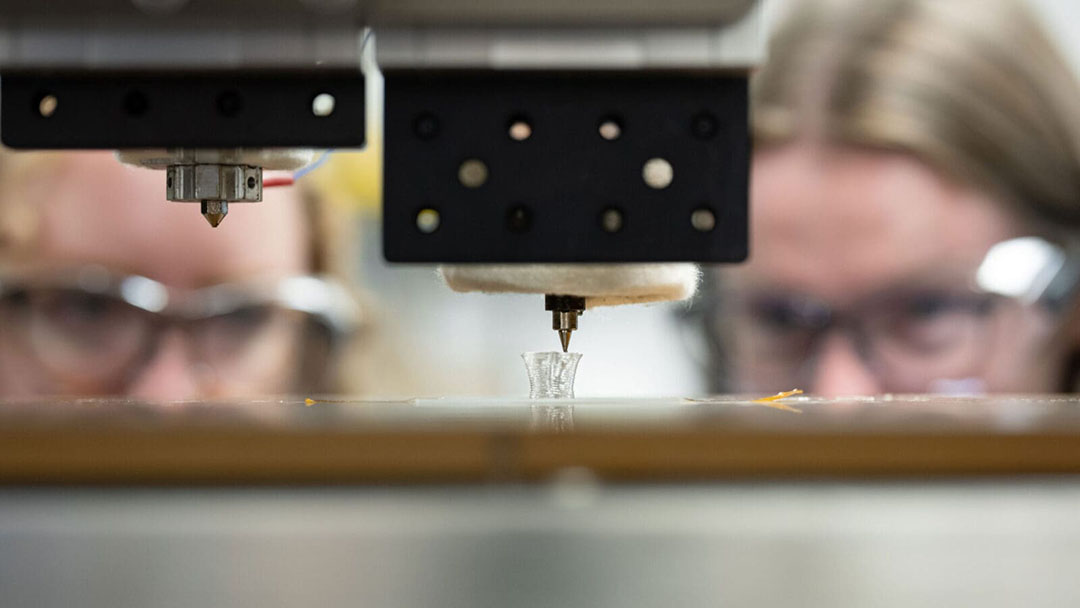Scientists have developed a cutting-edge 3D printing technique that creates plastics with precisely controlled flexibility — bending and stretching easily in some directions while staying rigid in others. This breakthrough allows for materials that are durable yet lightweight, soft yet strong, with potential applications ranging from advanced robotics to high-performance sports gear.
Materials that flex more in one direction than another are called anisotropic. Nature produces anisotropic structures to create things like clam shells or bamboo, which have the perfect balance of strength, flexibility, and weight.
Leaning into anisotropy
Inspired by this, Emily Davidson, an engineer at Princeton University, sought a starting material composed of different elements that she could attempt to arrange to produce anisotropic materials.
While biology achieves anisotropy through the arrangement of different proteins or biological molecules on the nanoscale, Davidson and her team turned to synthetic block copolymers as an ideal candidate.
“Block copolymers are a kind of polymer, where a chain of one kind of polymer is connected to a chain of another kind of polymer,” said Davidson.
Normal polymers are made of long chains of identical molecular building blocks and are found in everyday materials like plastics and gels.
In contrast, block copolymers contain two or more distinct types of building blocks, each with unique properties, allowing for more versatile materials. “In these materials, if we imagine they are made of strings of blue ‘beads’ at the ends with red ‘beads’ in-between, the red beads and blue beads ‘dislike’ each other, just like oil and water, so they separate, with all of the blue beads joining each other in nanoscale cylinders, and the red beads stretching in-between,” explained Davidson.
Thermoplastics and 3D printing
The specific type of block copolymer Davidson chose is what’s called a thermoplastic elastomer. Simply put, thermoplastic means it can be melted and reshaped while elastomer refers to its ability to stretch and spring back to its original shape when the material is at ambient temperatures.
These thermoplastic elastomers were chosen largely because of their compatibility with 3D printing and commercial availability. Additionally, on a nanostructure level, it was also important that the thermoplastic elastomers formed nanostructures that the researchers could orient in order to create materials with tunable, anisotropic properties.
As Davidson explained, before any processing is done, the nanoscale cylinders are short and poorly organized. “With the right processing, those cylinders can become very long and aligned, changing the material’s properties,” said Davidson.
To produce the long, organized cylinders within the otherwise elastic material, Davidson and her team experimented with 3D printing and, specifically, the flow of the copolymer as it was being printed. “The trick is making sure that the flow that the material experiences during processing is just right,” said Davidson. “And then for this material, it also needs to be heated up for a few minutes after printing to achieve the extraordinarily well-oriented nanostructure,” she said.
The post printing heating step is called annealing, a technique commonly used in materials science where a material is heated, causing permanent changes in the physical and sometimes chemical properties. “Right after they are printed, our materials are actually very soft and the nanostructure is not very well-ordered,” said Davidson. “Then we anneal them, and they transform into materials with excellent long-range alignment.”
Exactly why annealing helps order the nano-sized cylinders is unclear. “We know that something about the forces applied by printing makes the material ‘want’ to achieve a more perfect internal structure, but we don’t know exactly how,” she said. “We have a few theories, but can’t definitively state the reason, yet.”
Whatever the mechanism, the annealing allowed the team to specifically orient the cylinders in the material to achieve stiffness in one direction and softness or flexibility in the other.
Self-repairing plastics
The material’s response to annealing can also allow objects to heal broken interfaces and internal nanostructures, enabling reusable and recyclable 3D printed devices and self-healing components for applications like soft robots.
“When the polymer chains in the cylinders heat up, they can hop from one cylinder to a neighbouring one, including across a region that was previously cut,” Davidson explained. Once cooled these new connections persist and the material is healed.
The healing and thermoplastic properties will help improve the materials recyclability as old products can be cut up and reprocessed into new shapes. However, in practice there will be limitations to recycling as most recycling facilities only have the capacity to recognize and sort a few types of plastic, with this material not currently being one of them.
Despite these challenges, Davidson believes this material could replace other methods of making tuneable soft materials. Their method is scalable, anyone with a commercial 3D printer can do it, and it is cheap, costing only a couple cents per gram of material. Current competitive materials also require multiple processing steps whereas theirs does not.
The team is now exploring ways to produce biomedical devices and wearable electronics with their new plastic. Davidson envisions that these 3D printed block copolymers with tuneable architecture and self-healing capabilities will be useful for products like soft robots, wearable medical devices, and customizable prosthetics.
Reference: Alice S. Fergerson, et al. Reprocessable and mechanically tailored soft architectures through 3d printing of elastomeric block copolymers, Advanced Functional Materials (2024). DOI: 10.1002/adfm.202411812
Feature image: Unlike similar materials that require complex processing, the plastic can be created with a 3D printer. Credit: Sameer A. Khan/Fotobuddy














